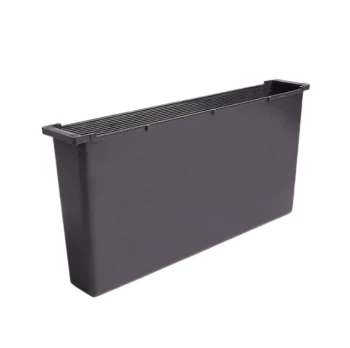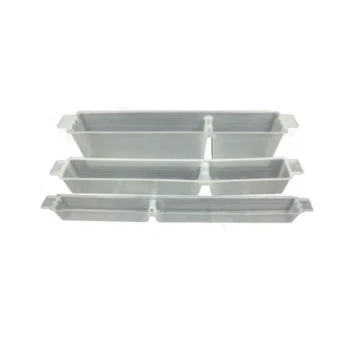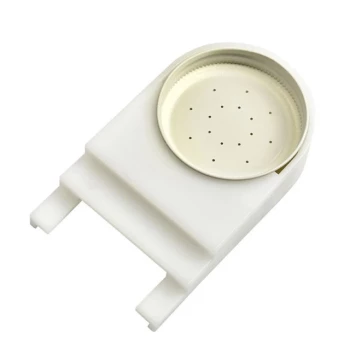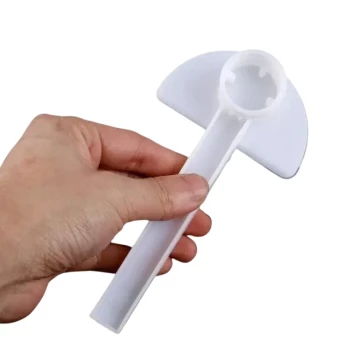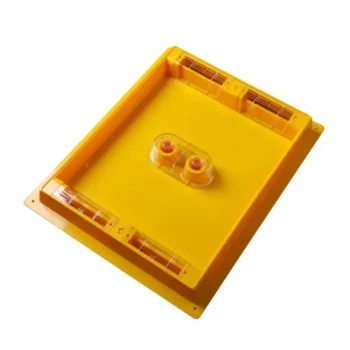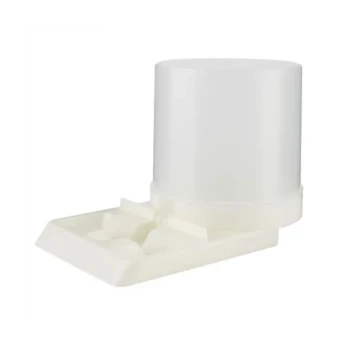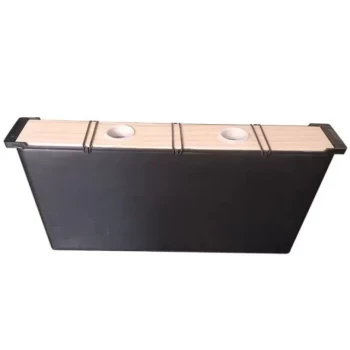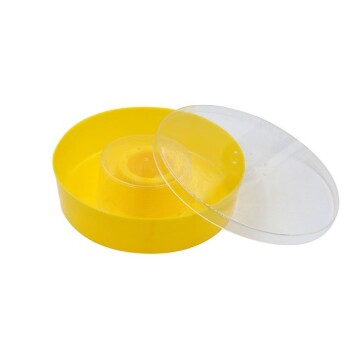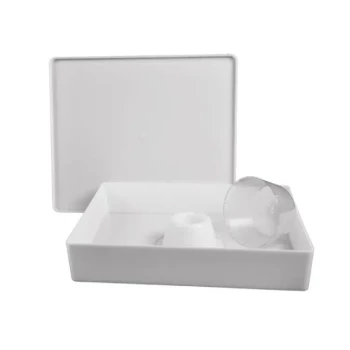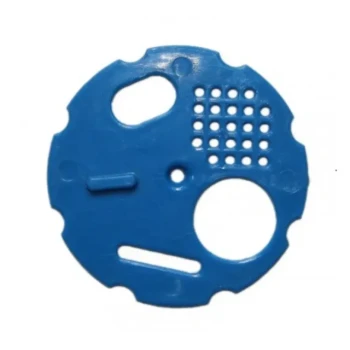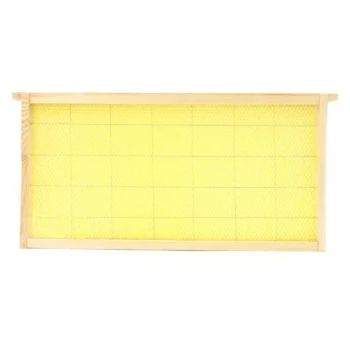To feed bees outside the hive, you create a sugar water solution and place it in an open container, such as a bucket, tray, or birdbath, for bees to access freely. This method, known as open feeding, requires adding floats like wine corks, wood chips, or rocks to the liquid to prevent the bees from drowning. The feeder should be placed a significant distance from your hives to minimize the risk of frantic behavior near the colony entrances.
While open feeding is simple to set up, it introduces significant risks, including triggering hive "robbing," spreading disease, and attracting pests. For targeted, safe, and effective support, feeding bees inside the hive is the professionally recommended and superior method.
The Mechanics of Open Feeding
Open feeding is essentially creating a public cafeteria for bees and other insects. If you choose this method, doing it safely is critical.
H3: Choosing a Container and Mixture
The container can be as simple as a shallow tray or as large as a five-gallon bucket. The standard sugar water ratio is typically 1:1 (sugar to water by volume) for spring stimulation or 2:1 for fall feeding.
H3: The Critical Step: Preventing Drowning
Bees can easily drown in open liquid. You must provide ample "landing pads" or floats. Materials like straw, wood chips, wine corks, or even non-treated sponges can cover the surface and give bees a safe place to stand while they drink.
H3: Siting Your Feeder
Place the open feeder at least 50 yards away from your hives. Placing it too close can incite a feeding frenzy that leads to robbing, where stronger colonies attack and steal resources from weaker ones right at the hive entrance.
Understanding the Trade-offs: The Dangers of Open Feeding
The apparent simplicity of open feeding masks several serious risks that can harm your colonies. As a trusted advisor, I must stress that most experienced beekeepers avoid this method.
H3: Triggering Robbing Frenzies
Open feeding is a broadcast signal that a rich food source is available. This can encourage strong hives to seek out other food sources, including weaker neighboring hives. This behavior can lead to the complete destruction of a weaker colony.
H3: Spreading Disease and Mites
An open feeder becomes a gathering point for bees from every colony in the area, including feral bees of unknown health. This is a highly effective way to transmit Varroa mites, American Foulbrood, and other pathogens between otherwise separate colonies.
H3: Attracting Unwanted Pests
Your sugar water will not only attract bees. It is a powerful lure for wasps, yellow jackets, ants, and other pests that may then discover and harass your hives.
H3: Lack of Control and High Waste
With open feeding, you have no control over which colonies get the food. The strongest, most aggressive colonies in the neighborhood will likely take the lion's share, while the weaker hives that need it most may be pushed out. You are feeding the entire local insect population, not just your own bees.
The Superior Alternative: Internal Hive Feeding
Feeding inside the hive solves nearly all the problems created by open feeding. It is the standard for responsible beekeeping.
H3: Targeted Nutritional Support
Internal feeders deliver sugar water directly to the specific colony that needs it. This allows you to support a new package, a weak hive, or a colony preparing for winter without involving any other bees.
H3: Complete Risk Mitigation
Because the food source is inside the hive, it does not advertise its presence to robbers, pests, or bees from other colonies. This dramatically reduces the risk of robbing and disease transmission.
H3: All-Weather Access and Efficiency
Bees can access internal feeders 24/7, regardless of rain, wind, or cold temperatures. Every drop of syrup goes to the intended colony, making it far more economical and efficient.
H3: Valuable Colony Insight
Monitoring an internal feeder gives you direct insight into a colony's health. If a hive suddenly stops taking feed, it can be an early indicator of a problem that needs investigation.
Making the Right Choice for Your Bees
Your decision should be guided by the goal of responsibly managing your colonies' health and stability.
- If your primary focus is supporting a new, weak, or specific colony: Use an internal hive feeder. This delivers nutrition safely and directly where it is most needed.
- If your primary focus is minimizing risk and maximizing efficiency: Internal feeding is the definitive and recommended method for virtually all beekeeping scenarios.
- If you are considering open feeding for community-wide support during a severe nectar dearth: Understand that you are accepting the high risks of initiating robbing and spreading disease for a benefit you cannot control.
By understanding these dynamics, you can provide targeted support that ensures your bees not only survive but thrive.
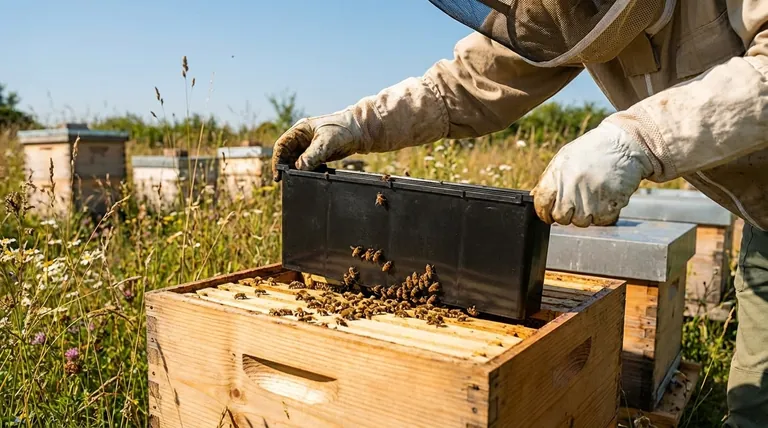
Summary Table:
| Feeding Method | Primary Use | Key Risks | Recommended For |
|---|---|---|---|
| Open Feeding (Outside Hive) | Community support during severe nectar dearth | Robbing, disease spread, pest attraction, lack of control | Experienced beekeepers accepting high risks |
| Internal Hive Feeding (Inside Hive) | Targeted support for new, weak, or specific colonies | Minimal risk | All beekeepers, especially commercial apiaries |
Ensure the health and efficiency of your apiary with professional feeding solutions from HONESTBEE.
As a leading wholesale supplier to commercial apiaries and beekeeping equipment distributors, we understand that targeted, safe nutrition is critical for colony stability and honey production. Our range of internal hive feeders is designed to deliver precise support while mitigating the risks of robbing and disease associated with open feeding.
Let our expertise and high-quality equipment help your colonies thrive. Contact HONESTBEE today to discuss your commercial beekeeping supply needs.
Visual Guide
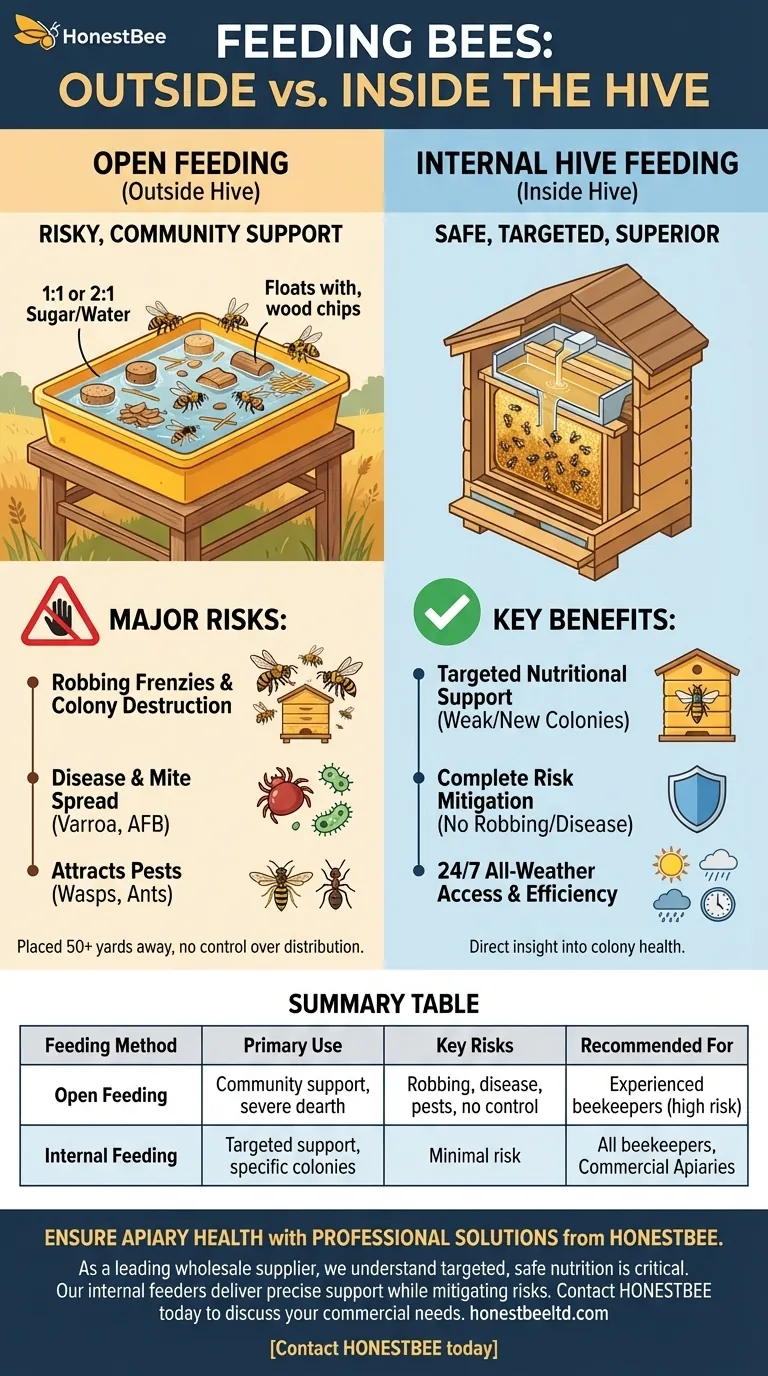
Related Products
- Professional In-Hive Bee Feeder HONESTBEE Frame for Beekeeping
- In-Hive Dual Compartment Frame Bee Feeder for Targeted Colony Nutrition
- Professional Hive Front Entrance Bee Feeder
- Boardman Entrance Bee Feeder Durable Galvanized Steel and Wood Construction for Beekeeping
- Classic Boardman Entrance Bee Feeder Hive Front Feeding Solution
People Also Ask
- What are the standard dimensions for Langstroth beehive frames? Choose the Right Size for Your Apiary
- How does the design of Langstroth frames make them easier to operate? Leverage Bee Space for Efficient Hive Management
- What is a frame in a Langstroth style beehive? The Key to Modern, Manageable Beekeeping
- What are the two most popular types of honey bee feeders? A Guide to Frame and Bucket Feeders
- Are frame feeders good? Maximize Your Hive's Health with the Right Feeding Strategy
